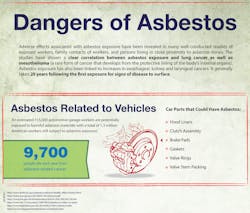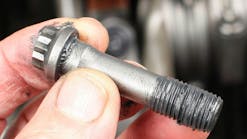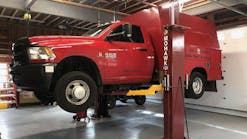The use of asbestos in automobile parts is something that is still unclear to many. While some uses of asbestos have been banned in the U.S., there is yet to be a complete ban. Asbestos can be used in certain materials, as long as the entire composition of the product contains 1 percent or less of the deadly mineral. The carcinogen was used heavily in the automotive industry, in parts such as brakes, fiberglass, and clutches.
If you work in the automotive industry, or are a classic car owner, there are certain things you should be aware of before you perform maintenance work on a vehicle.
The Dangers of Asbestos
Asbestos possesses the unique qualities of both insulating and preventing heat transfer, making it applicable for a variety of different automotive purposes. Its use has been focused specifically on internal combustion engines and friction-based brakes. As these vehicle parts begin to wear down and repairs need to be made, the possibility of accidental exposure to asbestos fibers increase.
For example, worn down brake pads on an older vehicle can flake easily, especially if rusted. If they begin to deteriorate while being replaced, asbestos fibers can be released into the air. Once these fibers are airborne, they may be inhaled or ingested and become lodged in the lining of the internal organs. The asbestos fibers may then develop into mesothelioma cancer in the lungs, stomach or heart. Mesothelioma is a rare form of cancer, and is diagnosed in around 3,000 Americans each year. The cancer can be very aggressive, and life expectancy for a mesothelioma patient is 12 to 21 months depending on the circumstances of the individual case.
Technicians are often not informed about the risks of asbestos in vehicle parts, and may not even be aware that it is still possible to be exposed in this line of work. Unfortunately, they will conduct repairs with little to no protective clothing, and as a result, be prone to the effects of this deadly carcinogen.
In parts of the world where asbestos is fully banned, like Australia, there are strict regulations regarding importation of classic cars that contain asbestos. In the past there have been instances of classic cars containing asbestos being imported into Australia, and as a result the owners are fined due to the great risk of exposure. Currently, vehicles containing asbestos cannot be imported to Australia until the contaminated parts have been replaced. Making necessary changes to classic cars can come at a hefty cost, especially if parts are no longer being manufactured. The only way to see incidence of asbestos-related diseases decrease is if the substance is fully banned and phased out of current use across the globe.
Help spread awareness
This October is Healthy Lung Month and is dedicated to recognizing those who have lost their lives to the disease, and highlight advancements made in cancer research. It is important to share information about asbestos in order to understand what it is, and how it may impact well-being.
Increased knowledge of asbestos and mesothelioma will limit future exposure to this toxic mineral.
Make sure to wear protective clothing when working on vehicles that may have parts containing asbestos, and properly dispose of impacted parts so as not to expose others.
Spread knowledge with fellow technicians and car enthusiasts to ensure that joy rides continue to be just that.
Information provided by: Mesothelioma Cancer Alliance


